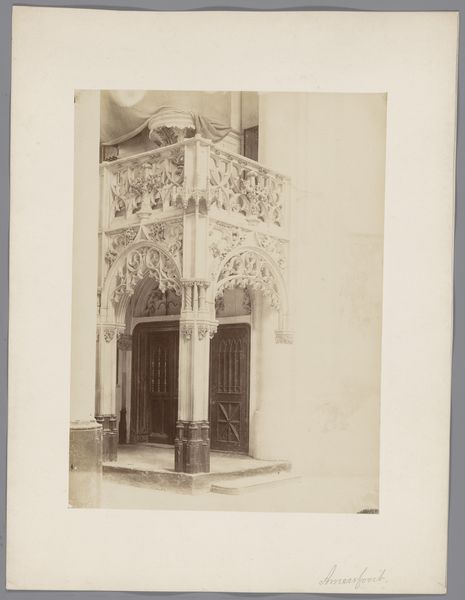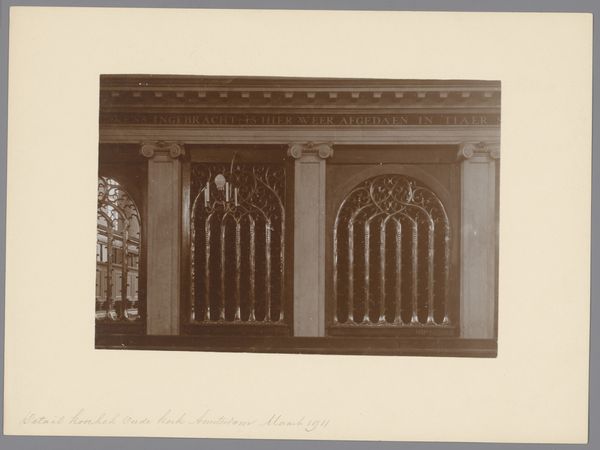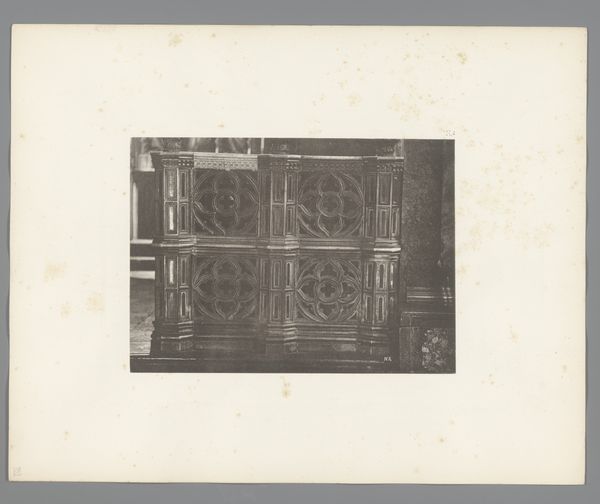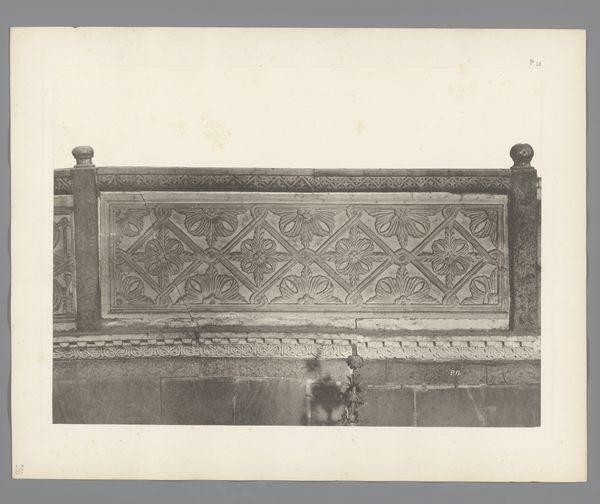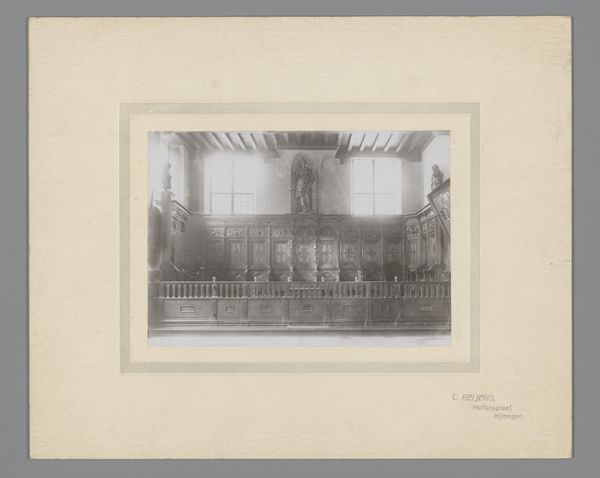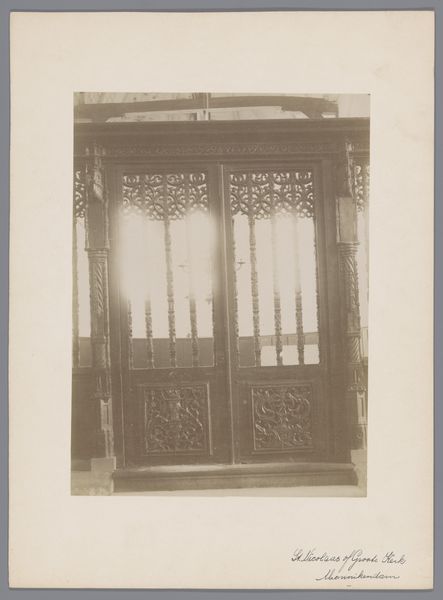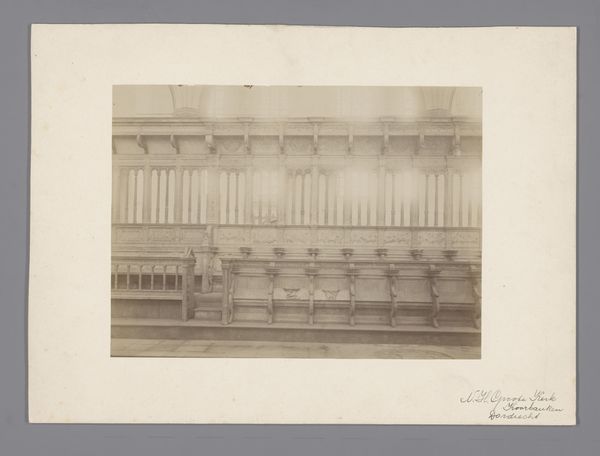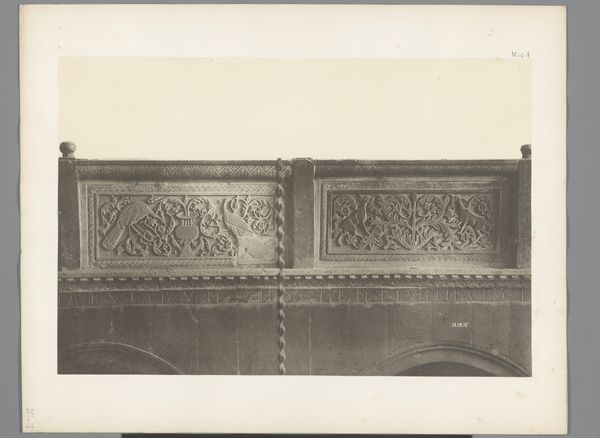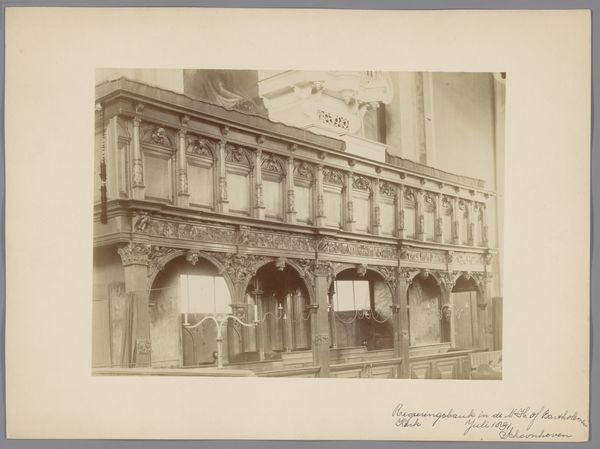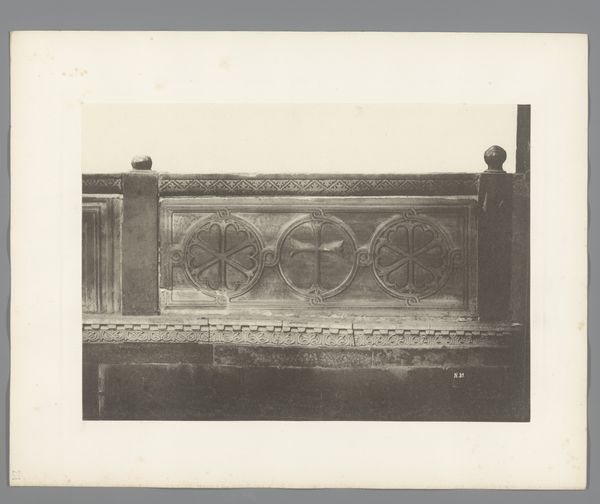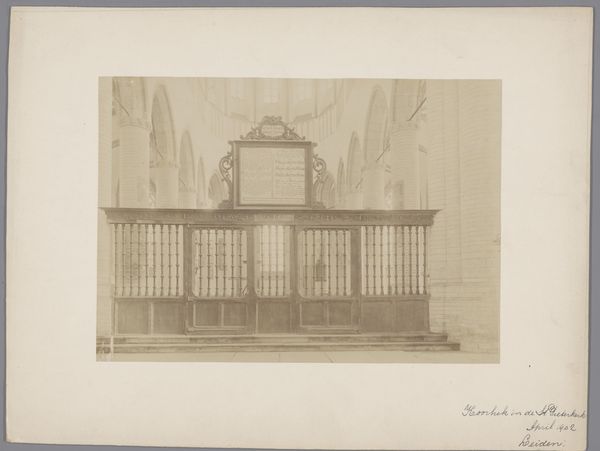
print, photography, wood, architecture
# print
#
landscape
#
photography
#
geometric
#
wood
#
genre-painting
#
architecture
Dimensions: height 224 mm, width 279 mm
Copyright: Rijks Museum: Open Domain
Editor: Here we have a photograph, taken sometime between 1875 and 1900, of part of the choir screen at St. Bavo Church in Haarlem, by Johannes Gerardus Kramer. What strikes me most is the contrast between the intricate carving of the wood and its functional purpose as a barrier. What do you see in this piece? Curator: The photographic print captures more than just an architectural element; it reveals a specific moment in the late 19th century when industry met craft. Consider the production of this screen. It would have required skilled laborers, access to specific materials – the wood itself – and a complex social framework that valued both religious spaces and the ornamentation within them. How do these factors contribute to the object’s inherent meaning? Editor: So, it's less about the artistic intent, and more about the means and context of its creation? I hadn’t thought about it like that. Curator: Precisely. Think about the labor that went into carving that screen versus the relatively new industrial process of photography used to document it. The image becomes a document of its time, illustrating evolving production methods and class structures embedded in art production. Is this just a record, or does it perpetuate existing hierarchies through its medium and circulation? Editor: That’s fascinating. I suppose the choice of photography as a medium reinforces a certain perspective or agenda. It allows for mass dissemination of this carefully crafted, yet stationary, artwork. Curator: Indeed. The photograph flattens the object, democratizing it in a way the physical screen never could be. This in turn makes me consider the ethics of how we interact with art objects through photographs. Editor: I see what you mean. Thanks for providing that insight into the materials and cultural forces at work. I never considered the interplay between craft and industry in such detail. Curator: My pleasure. Considering material conditions expands our understanding of an art object.
Comments
No comments
Be the first to comment and join the conversation on the ultimate creative platform.
